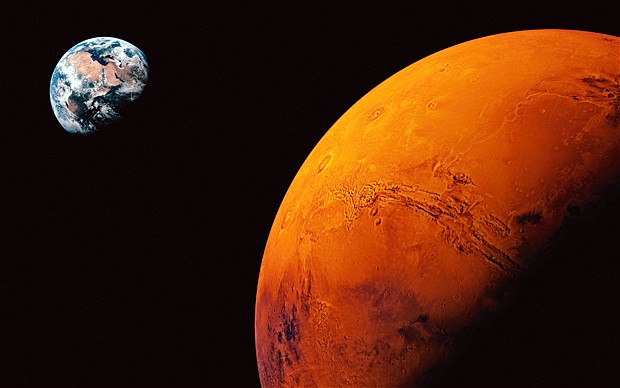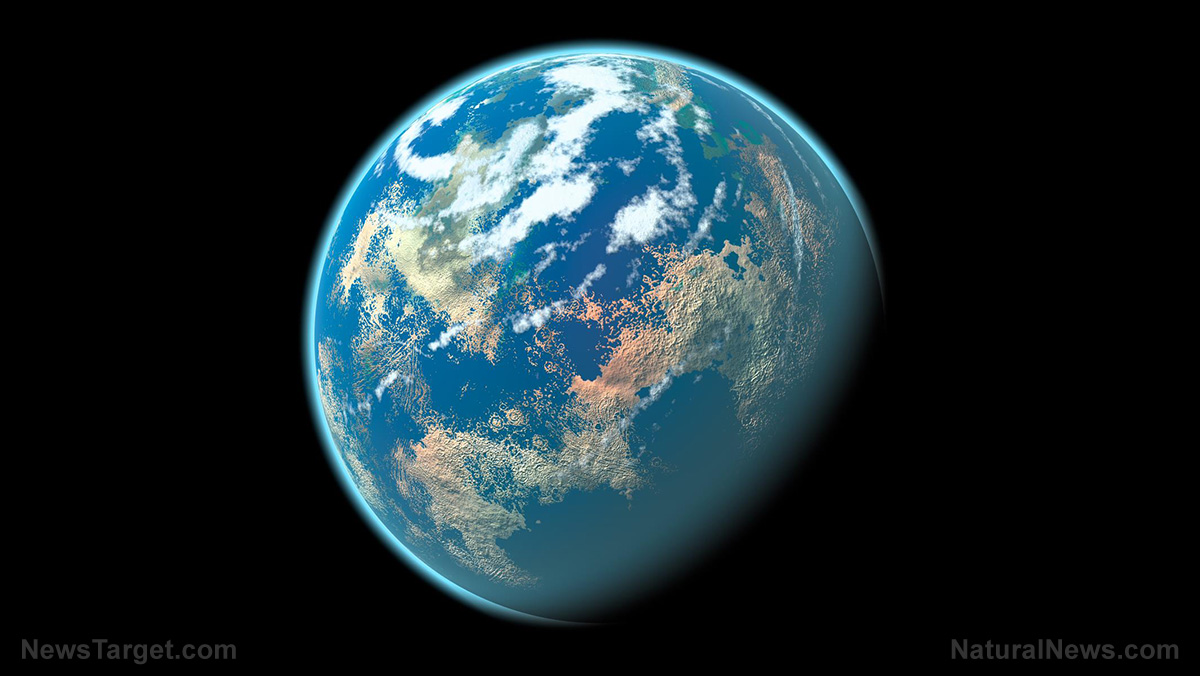Experts believe that Mars once had a thick hydrogen atmosphere that could sustain “key ingredients of life”
08/08/2019 / By Edsel Cook

Millions of years ago, asteroids slammed into Mars, possibly delivering loads of the ingredients required for starting organic life on a planet. During the time of the cosmic event, the Red Planet may have possessed plenty of atmospheric hydrogen, which would have helped spur the development of simple organisms.
Assuming Mars did have a hydrogen atmosphere at the time of the asteroid bombardment, the space rocks would have been adding nitrogen to the planet. As it happens, numerous biological molecules rely on the element, which interacted with hydrogen.
The idea came from a new study by researchers at the National Autonomous University of Mexico (UNAM). The findings were published in the Journal of Geophysical Research: Planets. Led by Dr. Navarro-González, the researchers made gas mixtures that simulated the early atmosphere of Mars. Then, they replicated the effects of asteroid impacts on the planet.
After combining carbon dioxide, hydrogen, and nitrogen, the researchers used infrared sensors to examine the nitrate levels in the simulated atmospheres.
The Curiosity rover found nitrates on the bedrock of an ancient Martian crater that might have been a lake in times past. The nitrogen-based compounds played an important role in the formation of life.
Atmospheric hydrogen and nitrates combine to create and support organic life
“The big surprise was that the yield of nitrate increased when hydrogen was included in the laser-shocked experiments that simulated asteroid impacts,” remarked Navarro-González in a statement. “This was counter-intuitive as hydrogen leads to an oxygen-deficient environment while the formation of nitrate requires oxygen.”
The gas mixture got heated by the shock of the simulated asteroid impact. However, its hydrogen component helped it cool down much faster.
As the mixture cooled down, it captured nitric oxide at a higher temperature than normal. A precursor to nitrate, the chemical compound yielded more substantial amounts at high temperatures.
Computer models of the atmosphere showed that hydrogen made it possible to maintain the temperatures that allowed liquid water to form and remain on the surface of a planet. Satellite images of Mars itself have found signs of channels and valleys that may have been formed by flowing water.
A planet needs a thick atmosphere to support any form of life. So far, Earth is the only world known to have the right amount and combination of gases to sustain complex living organisms.
In comparison, the atmosphere of Mars is so thin that it cannot keep cosmic radiation out, nor can it retain enough heat required for precipitation.
Is there life on Mars right now?
The combination of a thin atmosphere, high levels of cosmic radiation, cold temperatures, generally dry surface, and other unpleasant features led experts to believe that Mars was barren. However, recent research suggests that the planet may have once supported organic life – and may still be doing so.
“If you have a link between two things that are good for habitability – a potentially warmer climate with liquid water on the surface and an increase in the production of nitrates, which are necessary for life – it’s very exciting,” explained NASA Goddard Space Flight Center researcher Jennifer Stern, the co-author of the study. “The results of this study suggest that these two things, which are important for life, fit together and one enhances the presence of the other.”
In 2019, a study boldly claimed that it spotted mushrooms in photos of the Martian surface that got taken by NASA’s Curiosity rover a few years back. In the paper, researchers from Pondicherry University identified several shapes seen in the images to be similar to algae and fungi found on Earth.
Sources include:
Tagged Under: alien life, asteroid impacts, astronomy, atmosphere, breakthrough, Chemistry, discoveries, Life on Mars, Mars, outer space, planets, red planet, research, Space
RECENT NEWS & ARTICLES
COPYRIGHT © 2017 SPACE.COM
All content posted on this site is protected under Free Speech. Space.com is not responsible for content written by contributing authors. The information on this site is provided for educational and entertainment purposes only. It is not intended as a substitute for professional advice of any kind. Space.com assumes no responsibility for the use or misuse of this material. All trademarks, registered trademarks and service marks mentioned on this site are the property of their respective owners.

















